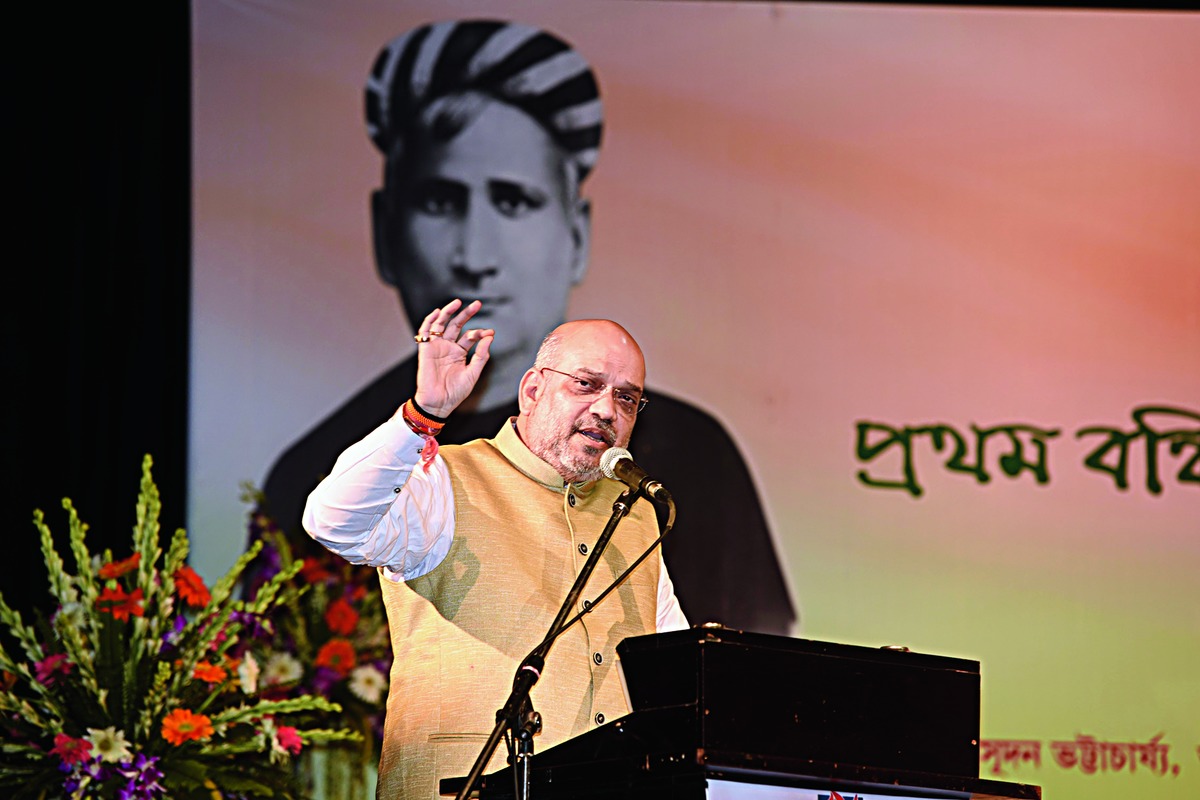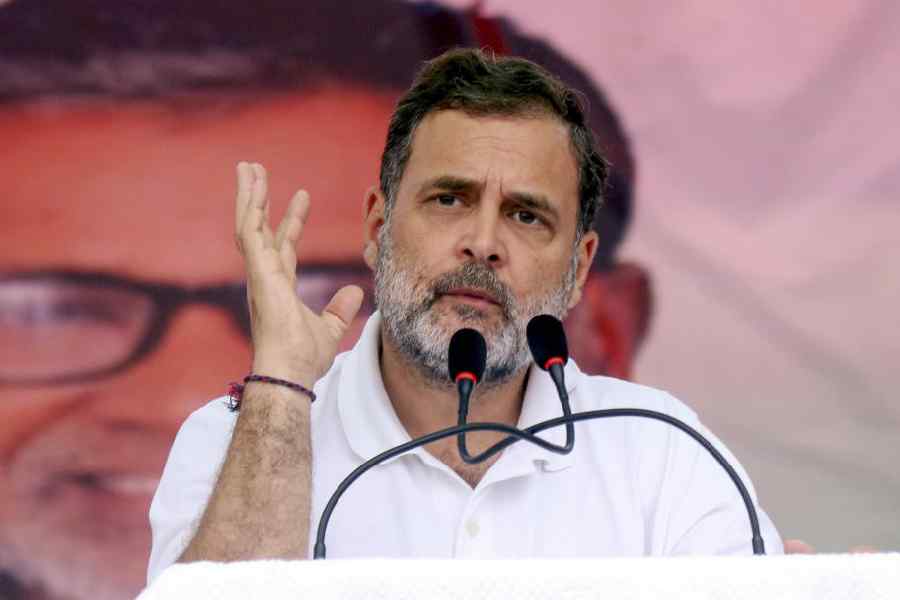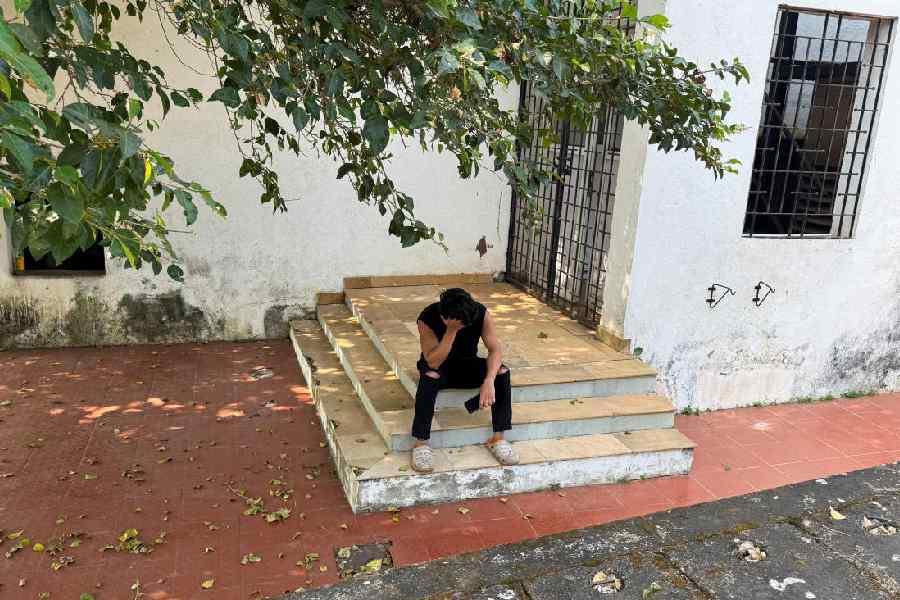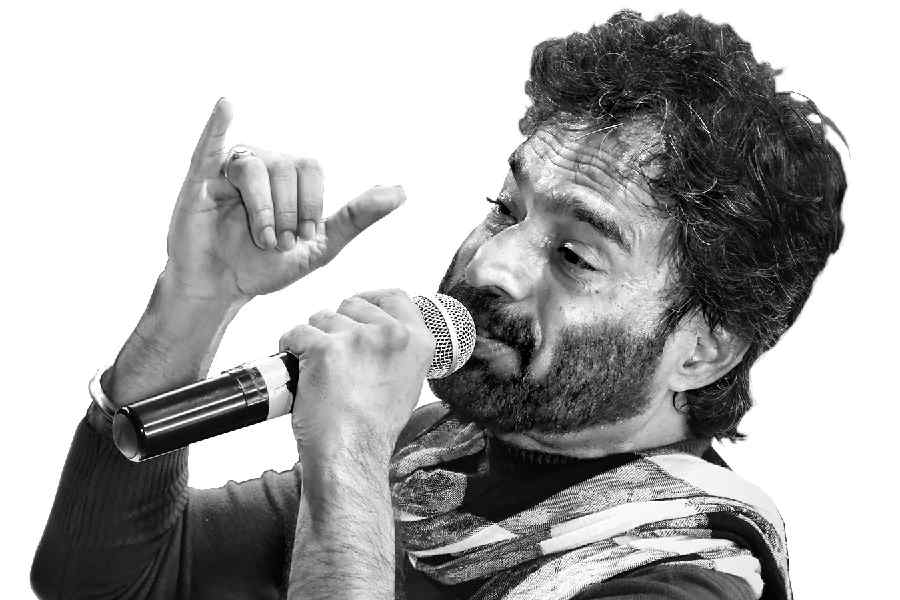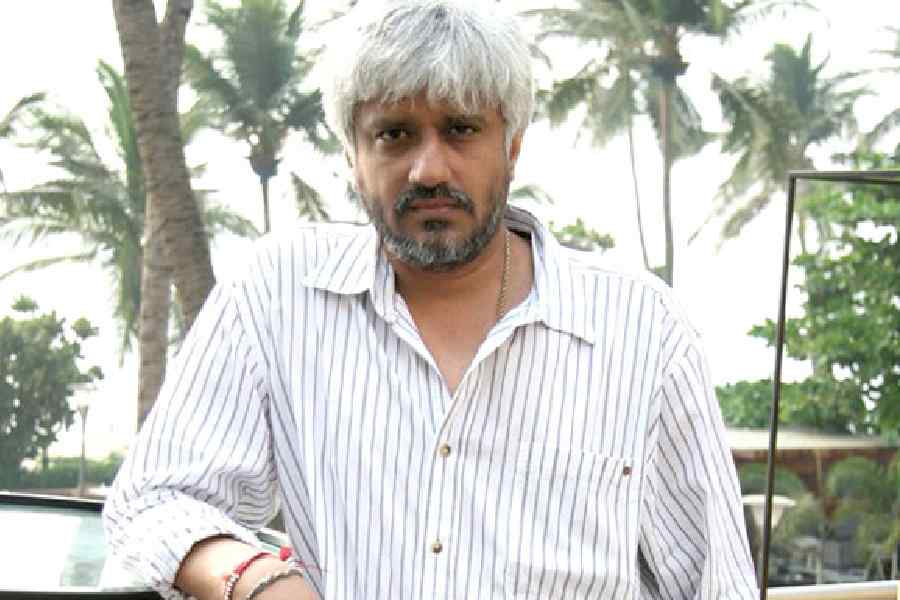
Bankim Chandra Chattopadhyay is considered a Hindu fundamentalist by a section of Hindu and Muslim intellectuals. He was certainly a devout Hindu by birth, but he did not pen any religious treatise. Some people project his books, Krishna Charitra, Anushilantatwa and Dharmatatwa as his religious creations. But none of these was written to propagate the Hindu religion.
Krishna as depicted in Krishna Charitra is not a Hindu god. He represents a concept - that of an ideal human being who is largely secular. He has shades of the Krishna we see in the Mahabharata. Freedom fighters were supposed to emulate his bravery, strength and wisdom. Anushilantatwa was supposed to be a primer for young Indians aspiring to overthrow the British imperialists, a manual to discipline the body and the mind. Balgangadhar Tilak's Gita Rahasya was also written with a similar agenda, to be an ethical guideline for freedom fighters instead of a religious text. Dharmatatwa is Bankim's logical interpretation of Hindu religion.
Now let us turn to his novels Sitaram and Anandamath. Sitaram portrays the glorious past of Bengal during the reign of the Pala and Sen dynasties. Some people get a whiff of Hindutva from these works. The protagonist of Sitaram is a Hindu zamindar who strongly criticises the Ilyas Shahi regime. Truth is, how can one expect a Hindu feudal lord set in those times to be singing paeans for a Muslim ruler? This was the norm for Hindu kings in the 14th century.
The controversy over Anandamath runs even deeper. The backdrop of the novel is the Sanyasi Uprising. When the British imposed restrictions on Hindu pilgrims in 1773, Naga and Giri monks fought back in unison. Anandamath is not a political commentary but a work of fiction. As sanyasis were the central figures, it is not surprising that they should sing religious hymns seeking freedom at Bhavani Mandir, a temple that finds reference in Anandamath. Because Chattopadhyay was a civil servant with British superiors, he portrayed the only other outsiders, Muslim rulers, as enemies. The novel ends on a semi-cautionary note couched in sarcasm, basically saying that the Muslim rule has ended and now, with the arrival of the British, one hopes things will improve.
During the freedom movement, Anandamath became the Bible of freedom fighters. The very influential leader, Aurobindo Ghose, penned a political pamphlet called "Bhavani Mandir" to inspire revolutionaries. At one point, British officers would arrest young men who had in their possession either Anandamath, Bhavani Mandir, Gita or the works of Swami Vivekananda. These books had little to do with Hinduism specifically.
That Chattopadhyay was never anti-Muslim is evident from his novels Durgeshnandini and Rajsingha, in which we find strong Muslim characters such as Diler Khan and Osman. Motibibi, from the novel Chandrasekhar, is shown as being compassionate towards Hindus. And in Rajsingha, Alamgir is a venerable man.


Then why is Chattopadhyay considered a proponent of Hindutva and a communal personality? Much of this has to do with the fact that he is the creator of Vande Mataram, the invocation to the nation imagined as Mother Goddess and not Devi Durga as is commonly, and mistakenly, believed.
Vande Mataram was composed by Chattopadhyay in 1857, the year of the Sepoy Uprising. Most likely, he was then posted at Berhampore near Murshidabad in Bengal. Some experts, however, believe it was composed at Chinsurah, where Chattopadhyay was then posted as deputy magistrate. There is some evidence that he had based Vande Mataram on a Sanskrit hymn he had come across in an old manuscript. The song was later used in the novel, Anandamath.
The song gained immense popularity during the freedom movement. Rabindranath Tagore composed the music for it and sang it at a session of the Indian National Congress (INC) in 1896. Rahimtulla Mahomed Sayani, a Western-educated Muslim politician, presided over that particular session held at Calcutta. Later, at the Calcutta Congress session of 1901, the same where Gandhi appeared on a Congress platform for the first time, Dakshinaranjan Sen sang the hymn to the accompaniment of a piano. It was Gandhi who first proposed in an article published in the journal, Opinion, that Vande Mataram be made India's national anthem.
When British administrators realised that the song was being used by freedom fighters, the Carlyle Circular - a secret circular sent by R.W. Carlyle, chief secretary to the government of Bengal - banned the song from being sung in all schools and colleges. That was in 1904.
Aurobindo Ghose started a weekly English newspaper in 1906, which he called Bande Mataram. In the editorial of the inaugural issue, he wrote that the song was a mantra for true patriots. When one sings it, one feels electrified, filled with a surge of patriotism, Ghose had written.
It is well documented that Tagore sang this song as he led a Swadeshi procession. In 1906, he also sang this at the annual session of the INC. In the same year, H. Bose Records had this song recorded by Tagore. Freedom fighters like Khudiram Bose and Kanailal sang this very hymn as they embraced their death sentence.
Most probably the Congress Working Committee took the decision to turn Vande Mataram into India's national anthem on September 7, 1906. In 2006, the then human resource minister, Arjun Singh, had decided to celebrate September 7 as the centennial of the song. But there is no evidence that the song was indeed composed then.
It was in 1920 that the song was given the status of India's national anthem. But the Muslim League resisted this as it considered it a Hindu fundamentalist hymn. To counter the allegation, the Congress, led by Nehru, decided to adopt only the first two stanzas. Much later, in 1951, Tagore's Jana Gana Mana was adopted as the national anthem. Vande Mataram was relegated to the status of one of the national songs of India.
Between 1930 and 1940, the Muslim League whipped up a protest movement around the song. Hindu nationalists countered in 1947. They described it as an expression of collective national emotion. The fight over the song continues but it is meaningless.
One must put the song in the proper context of Anandamath. You cannot expect a Hindu sanyasi fighting against the imperialistic forces singing a song of atheism. Also it was part of a fictional work. Bhavananda did not represent Bankim Chandra.
But when Chattopadhyay wrote the lines, " Who hath said thou art weak in thy lands/When the swords flash out in seventy million hands/ And seventy million voices roar/Thy dreadful name from shore to shore," he included both Hindus and Muslims of Bengal. The song is a salute to the ancient land of Bengal. Almost all religions offer respect to this mother figure. Followers of a particular religion must be tolerant and accept the positive aspects of another religion. This doesn't make them lesser followers of the religion; neither does it make them communal.
But unfortunately, both Hindus and Muslims have followed a narrow and fundamentalist approach towards each other. This has led to competitive communalism. Veer Savarkar's Hindutva was actually a response to Syed Ahmed's two- nation theory. And India's recent history is an offshoot of these older instances of intolerance and mutual hatred. The situation turned worse when a large section of so-called secular historians criticised only the Hindutva proponents, leaving aside Muslim fundamentalist historians.
The current fight over Vande Mataram is a result of a lopsided history projected by fundamentalists of both hues along with secular (mostly Marxist) historians.
Chattopadhyay was a liberal-minded person. He had several Muslim friends. He was an admirer of Mir Mosharraf Hussain and his classic novel, Bishad Sindhu, a fictional account of the lives of Prophet Muhammed's grandsons, Hasan and Husain, and the Battle of Karbala. He wrote the introduction of the book. He commissioned articles to Hussain and many Muslim writers for his literary journal Banga Darshan.
Chattopadhyay was a rationalist - a follower of the British philosopher, John Stuart Mill, and French philosopher August Comte. He had always been progressive in thought. Those who call him a Hindu fundamentalist are simply ignorant.
The writer is an emeritus professor of History at Jadavpur University and director of the Corpus Research Institute, Calcutta

